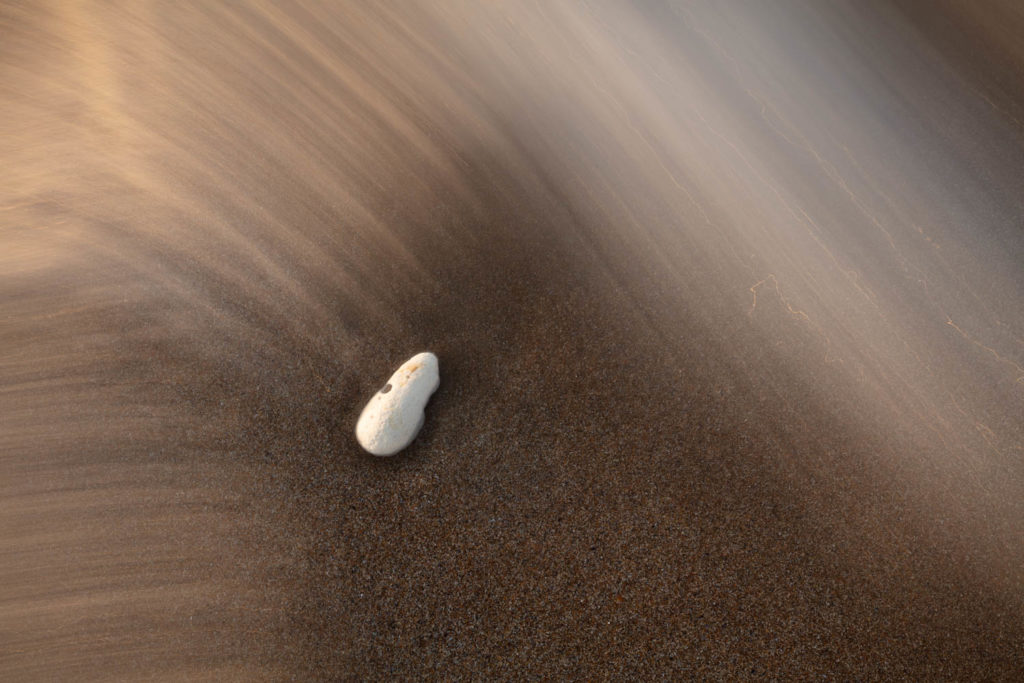
Though I am best known for my Sirens portfolio, photographs of monstrous waves named after myth and legend, I have found myself, more recently, to be consciously making work which will not be as attention-grabbing. These works often resonate with a different audience, which has been quite interesting to witness.
One of these projects is called ‘Ghost in the Shell’, which explores the afterlife of shells and fragments of chalk found at the tideline. These objects are inanimate but they once had a life: shells once housed mollusks, and chalk was made from tiny marine creatures and the calcareous remains of algae. By using a slow shutter speed, I attempt to contrast the stillness of these objects with the movement of sea water, like a ghostly echo of the life the subjects once had. I first started working on this project in early 2013, publishing a few of them, but it was not until 2020 that the project began to coalesce.
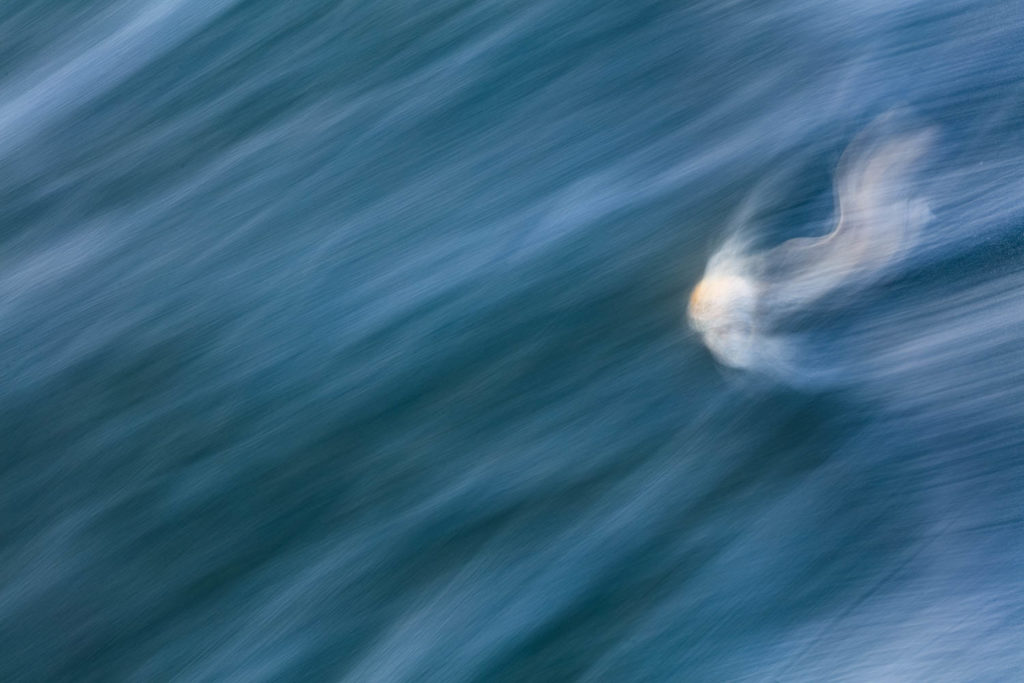
Apart from Sirens, this project is probably the body of work with which I have felt most satisfied; it has been lovely to concentrate on the gentler side of the ocean, the images acting as a foil to my earlier work.
Giant waves only show up occasionally. The little dramas captured in ‘Ghost in the Shell’ may be found every day, if only we look down.
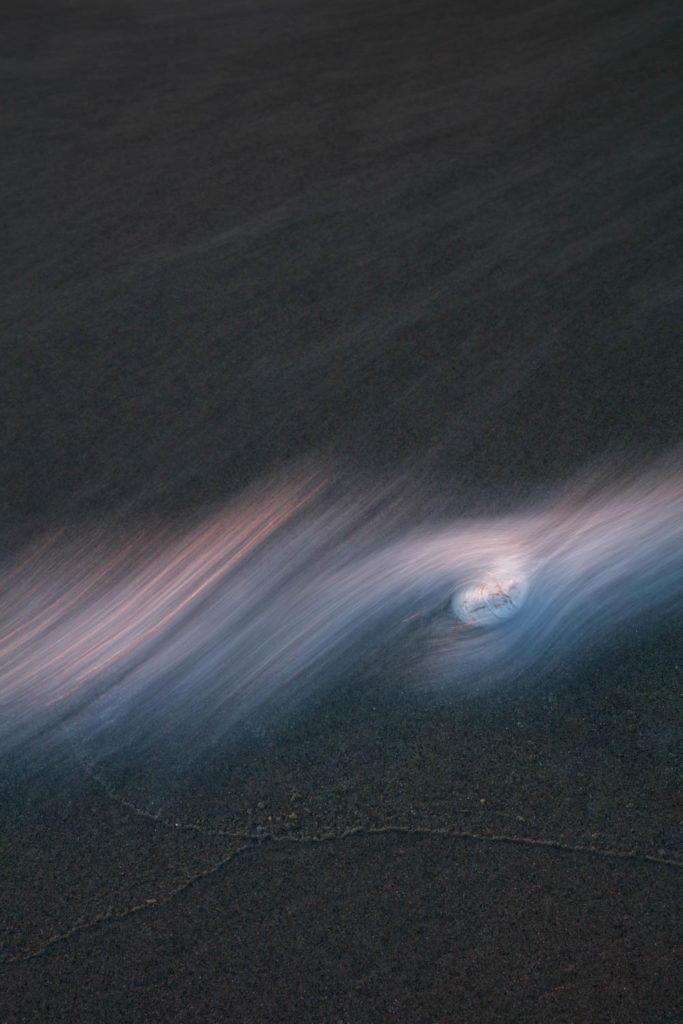
Making these photographs has been therapeutic. I enjoy a stroll along the tide line, seeing what the sea has offered up. If I find a shell with water curling round it, I will set up my tripod and wait for the perfect moment. Patience is required as, often, the moment never arrives, or the sea picks up the shell and carries it away. If it were easy, it wouldn’t be as satisfying.
While waiting, I have time to absorb everything else brought to me by my senses, the smell of the ocean, the sound of the waves, the call of sea birds, the breeze on my skin, the taste of salt carried by the wind. It’s meditative and I like it very much.
Projects like this enrich my experience of the world because they make me more observant of the little things that others might walk past, or even on! It also means that I always have something to do, because if the sky is boring, usually bad news for a traditional landscape photographer, I can still point my camera down.

With only two exceptions, the photographs in the series, so far, were made on the United Kingdom’s Sussex coast. I grew up in Sussex and it’s where I make most of my photographs today. Every time I arrive on one of the beaches, it feels like coming home.
Much of the Sussex coast is shingle, the sort of beaches where big waves occur, but there are a few sandy stretches that are good for finding seashells and enjoying the ocean in its quieter moods. Chalk is the dominant rock here, with small pieces strewn across many beaches. There are also plenty of shells. Some common shells are there all year round, like mussels and slipper limpets. Others show up seasonally or after big storms, or when you least expect them.
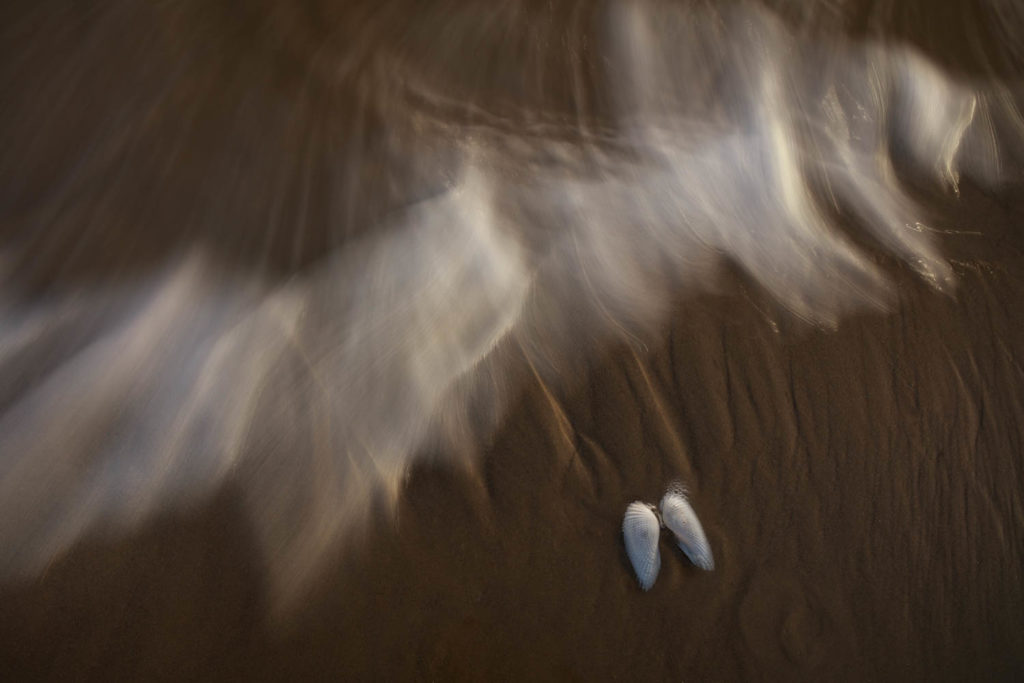
I particularly enjoy photographing piddock shells, also known as Angel Wings. Small piddock shells are often on the beach but are only a few millimeters long which, unfortunately, makes them too light for the project, as even the smallest waves will take them away from me. Recently, however, I found many intact and large piddock shells on one of my favorite shell beaches. I spent a very happy evening photographing them, all while hoping their presence wasn’t another sign of the ecological crisis.
I’ve also enjoyed learning more about the shells I photograph. For instance, piddocks use the serrated edges of their shells to grind away at clay, wood, or even soft rock to make burrows, all by simply rotating. These burrows can be surprisingly deep. The piddock will stay in its burrow for its whole life – approximately eight years – using a siphon to suck in water that it filters for nutrients. After a piddock dies, other sea creatures will use its burrow. Isn’t nature marvelous?
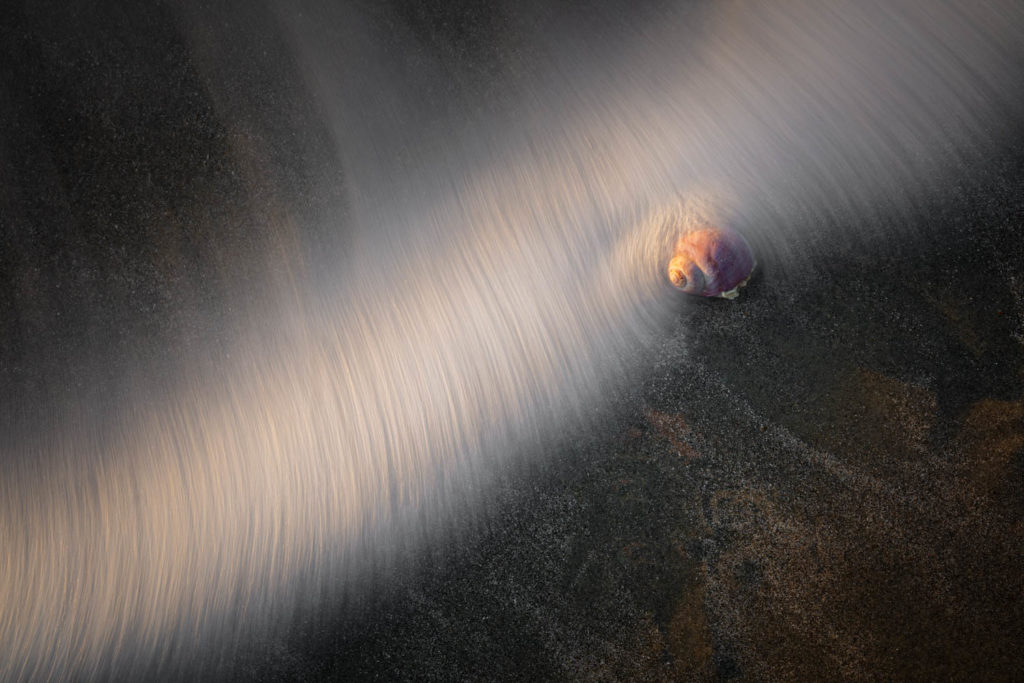
For most of this project, I have used my 24-70mm lens on a full-frame camera. To keep everything steady for the long exposures, I use a heavy tripod, pushing the legs into the sand for additional stability. The camera needs to be as parallel to the sand as possible, to keep everything within the plane of focus. Sometimes, it’s a challenge to avoid including the shadow or reflection of the tripod legs, or the photographer!
I use neutral density filters to slow the shutter, and a polarizer. A cable release allows me to capture the precise moment. Shutter speed depends on the conditions. The sea doesn’t have a constant speed and neither do my photographs. I find about half a second to be a good place to start and then I adapt it as needed to get the effect I want. Speeds of longer than a second are unusual, except when the foam is moving very slowly.

Although the original concept was to contrast the movement of the water with static shells, recently I have allowed into the collection some photographs where the shells have moved. They don’t perfectly match the ‘brief’, but I like them, so in they went!
I tend to prefer intact, or nearly intact, shells with appealing colors, shapes, or patterns. A dry shell may look washed out and plain but, once it becomes wet, the colors and patterns often shine through. I find that flat or nondescript, grey shells (oysters often offend on both counts) can be a bit boring in the frame, whereas shells with bold shapes, like razor clams, or shells that look like little boats when upside down, often work much better.
Tellins seem to come in all sorts of interesting colors and are some of the smallest shells I photograph. They’re prone to being washed away, but their beauty is well worth the effort.

Despite my attachment to these shells and their beauty, I bring them home only rarely, as I prefer to leave nothing behind and take nothing away (save for the rubbish left by others). Still, I have a small collection of piddock shells, though I have a little rule that keeps things fresh and challenging: after a session of photographing a shell, I let the sea take it, which means my collection won’t last very long!
Spending so much time at the tideline, I encounter a lot of plastic. This breaks my heart, as I have always had a powerful respect for the ocean, its unknowable nature and powerful might. As a youngster, I joined my voice to the campaign to end whaling, and I have supported various ocean conservation organizations my entire life. But, until recent years, amidst the growing urgency of the climate crisis, I can honestly say I never really thought of the ocean as being vulnerable.
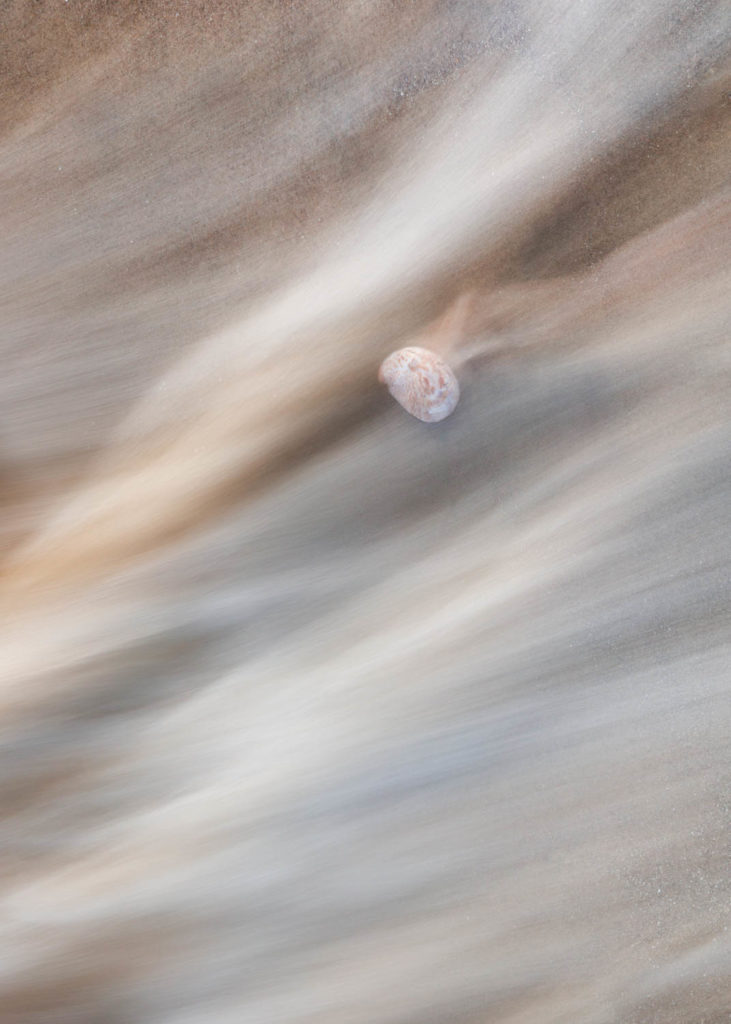
I see plastic on the shore all the time now: great skeins of fishing net, hooks, and tackle as well as smaller fragments that might escape the notice of those not often looking down. It’s frightening, and it takes a lot of effort to remain positive. I find it helps to do something, so after every visit to the shore, I try to carry off some plastic. We can all do this; cumulatively, it will make a difference.

I also eschew single use plastics and actively seek alternatives to plastic, where sustainable. I avoid eating fish and seafood, though that is much harder, as fish is delicious. Still, I feel I have little choice in the matter. It’s not just that I love the ocean; I want my children to have a future here. None of us is bulletproof when it comes to our impact on the environment, and I am certainly no exception, but there are things we can all do and, no matter how small, that must be better than nothing.





